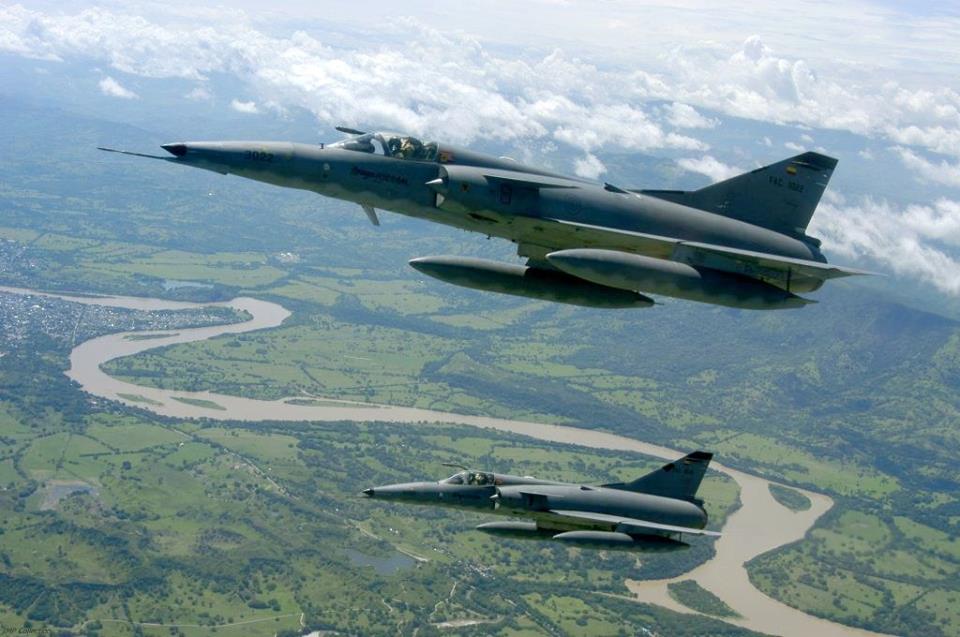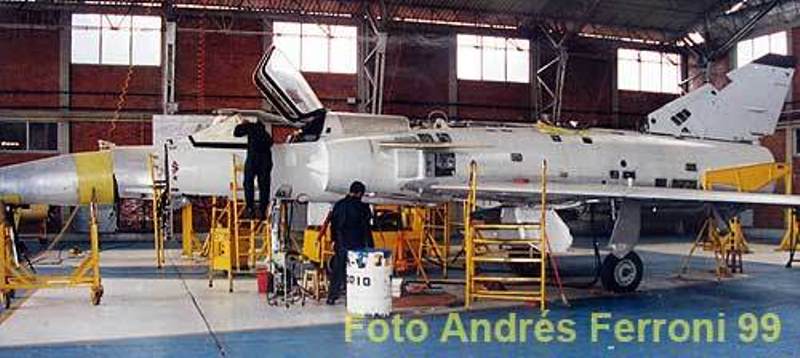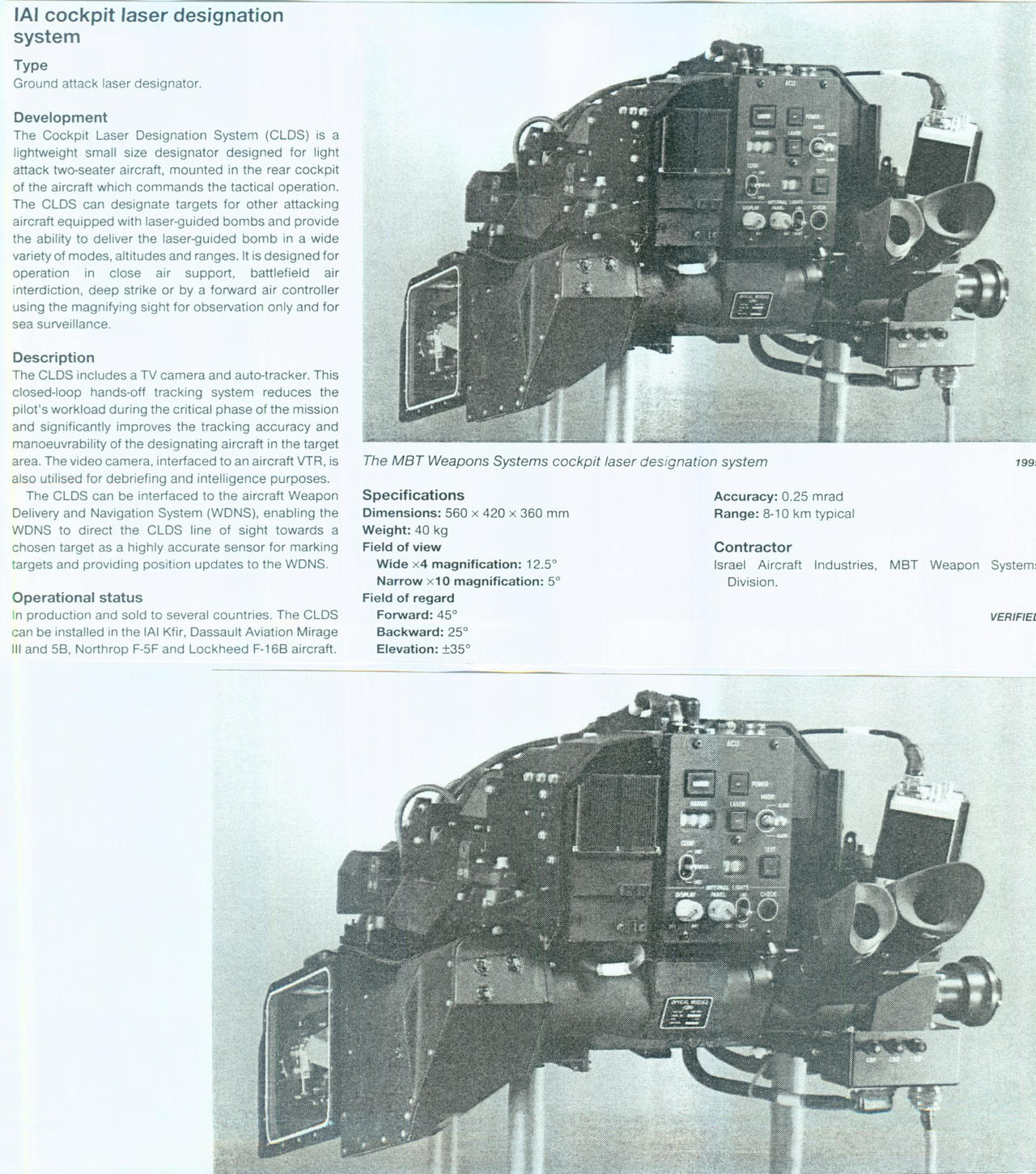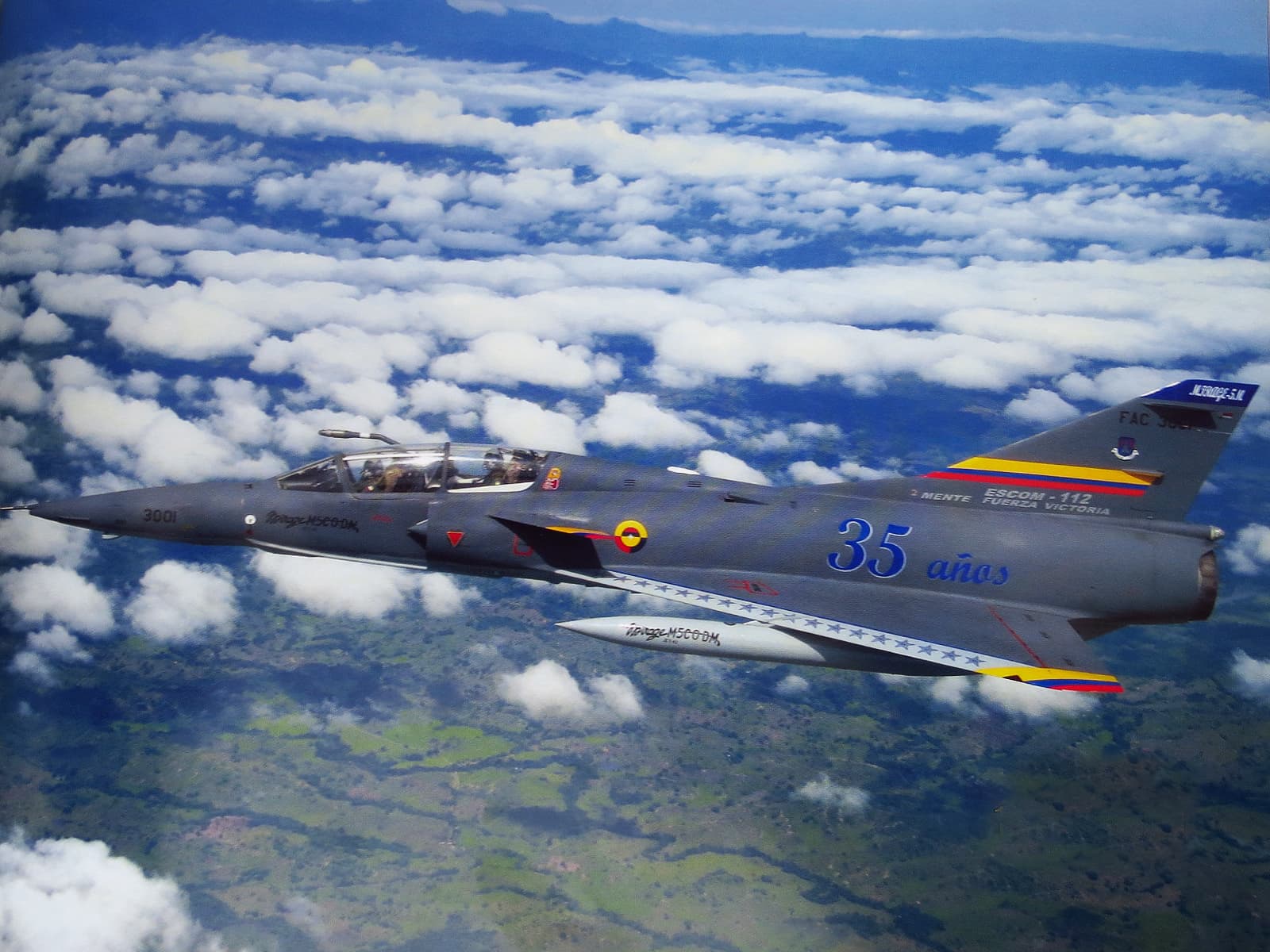- Yes
- No
In this suggestion we’ll be having a look at the Colombian upgraded Mirage 5s, the Mirage 5COAM.

The story of the Mirages in Colombia started in the mid to late sixties. Colombia found itself without a dedicated fighter aircraft and desperately wanted to acquire one. The aircraft of choice for the FAC was the US-built A-4 Skyhawk. However, the United States refused to sell these aircraft to Colombia, forcing them to continue the search for a proper fighter aircraft. The logical next step for Colombia was to look at the European aircraft builders. Between March 20 and April 1, 1970, five FAC officers and a non-commissioned officer evaluated various versions of Mirage aircraft. By December 10 of the same year, the Mirage 5 had been selected and the contract included the purchase of 14 Mirage 5COA fighter-bomber aircraft, 2 Mirage 5COR reconnaissance aircraft and 2 two-seat Mirage 5COD trainer aircraft. Deliveries started in 1971 with the CODs and went on to 1973 when all aircraft would be delivered to Colombia. The aircraft mostly served in counter-guerrilla operations and did so adequately until the 80s.

Just like so many countries (especially in South America), Colombia too realized that its fleet of Mirages was becoming more and more obsolete. In 1983 Dassault offered a deal to upgrade Colombia’s Mirages to a new standard, based on the Mirage IIIEX prototype. This upgrade would have included a new engine, canards, in-flight refueling probes, and more. Colombia turned down the offer as it looked toward Israel for upgrading the Mirages. This proposed upgrade would have upgraded the plane’s engine to the J79. These negotiations also fell through as the US vetoed the sale of the engines. And so Colombia was forced to fly their obsolete Mirages well into the 80s. The “Caldas Corvette Crisis" of 1987 once again sparked the debate for upgrading or replacing the Mirage 5s as they were clearly inferior to the F-16s that rivaling Venezuela possessed at the time. Luckily for Colombia, the US embargo placed on them had been lifted, allowing negotiations with Israel to resume. A deal was signed in 1988 for 12 Kfir C2s and one TC7. These were all upgraded to the C7 standard and along with that, an upgrade for the Mirage 5 to a similar standard was also implemented. Initially, it had been planned to install the aforementioned J79 engine or the F404, but cost restrictions prevented this from happening. The upgrade was nonetheless extensive, the aircraft received a Kfir-style nose, with an Elta EL/M-2001B fire control radar, a Weapons Delivery and Navigation System (WDNS), HOTAS controls, canards (75 percent the size of those on the Kfir), four new hardpoints (increasing the total amount to 9), an aerial refueling probe and a single high-pressure fuel loading point. From 1991 onwards, twelve single-seaters were upgraded, including the Mirage 5COR FAC 3011, which lost its reconnaissance capability and was redesignated FAC 3035. The designation of the upgraded Mirage 5COAs was changed to Mirage 5COAM, the M standing for Modernized. Funnily enough, Colombia at the time did not have an aircraft capable of refueling the Kfirs and Mirage 5s, so they were forced to alter an existing Boeing 707 to perform these duties.

Continuous conflict in Colombia meant that the aircraft were still intensely used after their upgrades, still mostly in counter-guerilla-type warfare. The changing nature of the conflict meant that a lot of the conducted air strikes were now in densely populated zones, meaning that accuracy was of the utmost importance. As the Mirage 5COAMs at this point were unable to deliver guided munitions, another upgrade program was started. This program was launched in February 2001. The latest modernization included the installation of night vision systems, WDNS-391 weapons delivery, and navigation system for smart weapons delivery, an Elbit 82 stores management system, video capability, and an armament control display panel, while the two-seaters received a Cockpit Laser Designator System (CLDS) to direct the new IAI Griffin laser-guided bombs. These bombs would first be used in 2002 when a flight with one Mirage 5COAM and one 5CODM was used to deliver said weapon. The two-seat Mirage 5CODM used its laser designator to mark the target, after which the Mirage 5COAM dropped its bomb to destroy the target. The mission was a success and similar strikes were soon after done on a regular basis.

Another important milestone was the addition of Python III missiles in 2004, these were acquired to increase the combat potential of the Kfirs and Mirage 5s. Unlike the Kfirs or the similar Chilean Pantera, it seems that the aircraft only had the outer wing hardpoints wired for missiles, limiting the total amount to 2.
Video of firing trails of Python 3 on the Colombian Mirage 5COAM
The story comes to a close starting in 2008, when the aircraft are starting to be retired after 38 years of non-stop service. The planes can look back on a successful career, going from being the first aircraft to break the sound barrier in the country, through multiple modernizations and eventually becoming the first aircraft to drop guided munitions in the country. On October 29, 2010, the official farewell ceremony for the Mirage 5 was held after its replacement by newer Kfir aircraft.
General characteristics:
- Max Speed: 2350kph
- Length: 14.8 m
- Wingspan: 8.2 m
- Height: 4.0 m
- Crew: 1
- Empty Weight: 5915 kg
- Max Weight: 13700 kg
- Max Payload: 4000 kg
- Propulsion: 1x Atar 9C (4300kgf dry, 6200kgf on afterburner)
- Radar: Elta EL/M-2001B radar rangerfinder
- CCIP/CCRP: Yes
- Flares/Chaff: Unclear, probably not.
Armament:
guns:
- 2x 30mm DEFA 552 cannons
dumb bombs:
- Mk. 81 250lb bombs
- Mk. 82 500lb bombs
- Mk. 83 1000lb bombs
guided bombs:
- Up to 2x IAI Griffin LGBs (though sadly the plane could not self-designate)
air-to-air missiles:
- Up to 2x Shafrir 2
- Up to 2x Python III
Place in-game:
The Colombian Mirage 5COAM would offer yet another unique take on the known-and-loved Mirage III family. Balancing this aircraft would be undeniably hard given the combination of lackluster flight performance, no countermeasures, and advanced Python III missiles. Despite this, I believe it could be a valuable asset to flesh out any tree it could come to, and there are a fair few options for where it could go. Given the abundance of Mirage variants in South America, a premium role in a joint South American tree seems likely, although a spot as a researchable vehicle before the ENEAR Pantera would also be possible. In either the Israeli or French trees, it also seems logical to place it as a premium since it was an export product for both. Although in the case of Israel, it could also be placed after the Nesher, or possibly form a bridge between the Mirage IIICJ and the Kfir C7.





